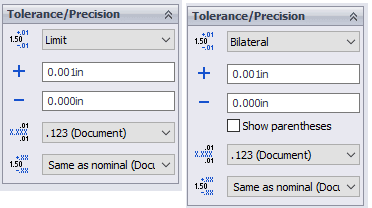Paul Finch said:
OK.
In simple terms, what it appears that you advocating is that without exception, MMC represents the condition in which a group of parts are most likely to have best interchangeability. This simply isn't true.
On top of that, it also appears (granted I have not absorbed your entire presentation; it's very dense, and it is a work day...) that you are advocating, basically, that all tolerances should be unilateral and MMC should never be exceeded. While this may make sense in certain scenarios, in the real world it makes manufacturing things more complicated than it needs to be.
Say I'm machining a surface (or trimming a part or milling a pocket. Whatever. Doesn't much matter) that needs to be 50mm tall, and I know that if this surface is ANY taller than 50mm, my parts will not fit. 50.000001mm is a failure.
I know to a certainty that if I make 1,000 of these parts and I've commanded my milling machine to give me 50mm height, I'm going to get some that are exactly 50mm but I'm also going to get some that are 50.01 and some that are 49.99 and so on.
If the drawing that's been handed to me by the engineer states in no uncertain terms that I can NEVER exceed 50mm, what am I to do? If I'm a smart machinist, I'm going to shift the target of my programming toward the center of the tolerance, however far away from the nominal (this is what that word means) target that may be, such that I produce the highest possible percentage of good parts. This in turn means that the center of my statistical distribution of finished dimensions is going to shift away from the nominal target, and toward the center of the tolerance. Depending on the machining operation, it may move a lot.
Point is this: when we set a value and add a tolerance, we are telling the machinist/fabricator/foundry/whomever two things:
where we want the center of the statistical distribution of feature sizes to land, and how many of the inevitable outliers they get to count as good. If we, as designers, are smart and understand how are parts are going to be made (which we should) this may mean the tolerance value is not symmetric. But whether it is or is not, it is critical that we set what the target is. What you are doing, in effect, by setting MMC as the upper limit on a dimension and providing a unilateral tolerance is allowing whomever is next in the chain of custody to decide on their own what the true target value is for the manufacturing process. You've effectively just removed information from the game of telephone that we are already playing. There is no value added; you wind up with your drawings being less useful and carrying less meaning to the guy who has to interpret them.

